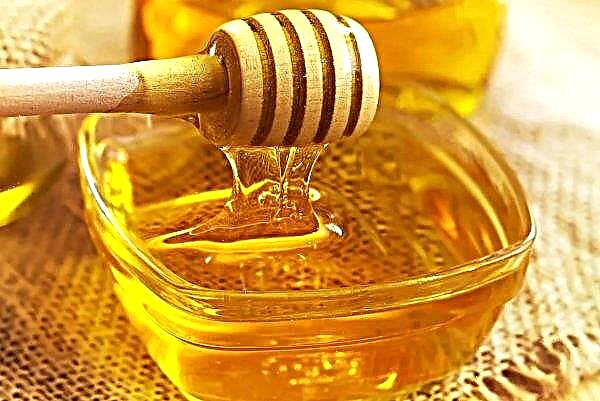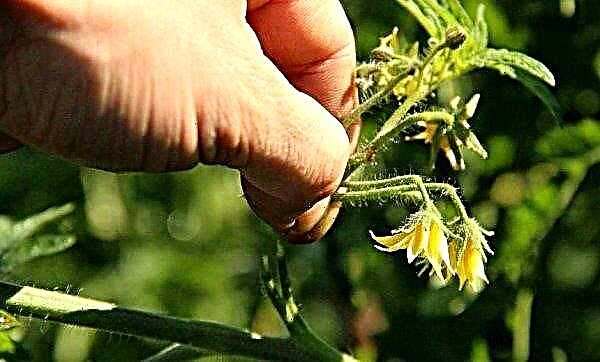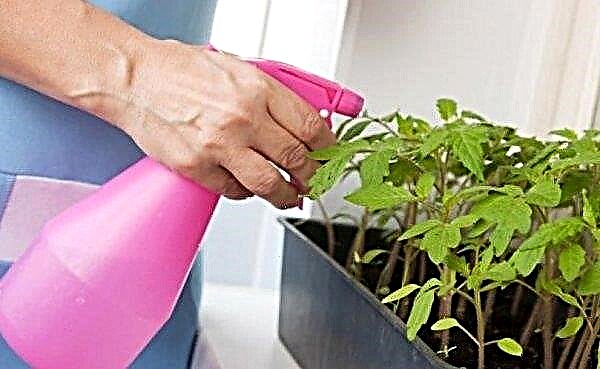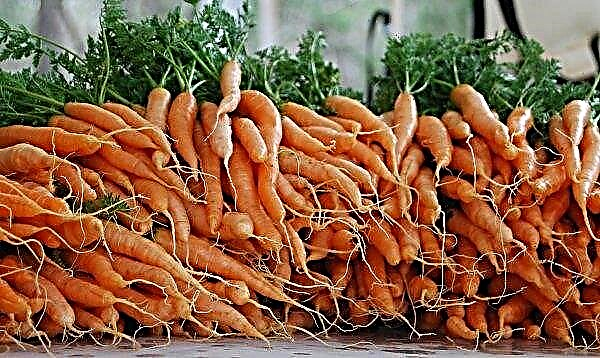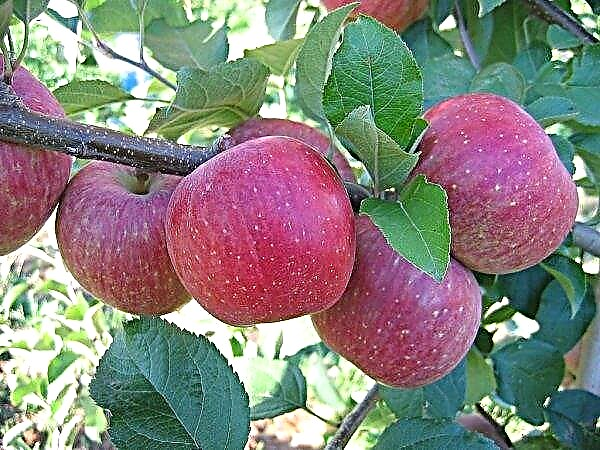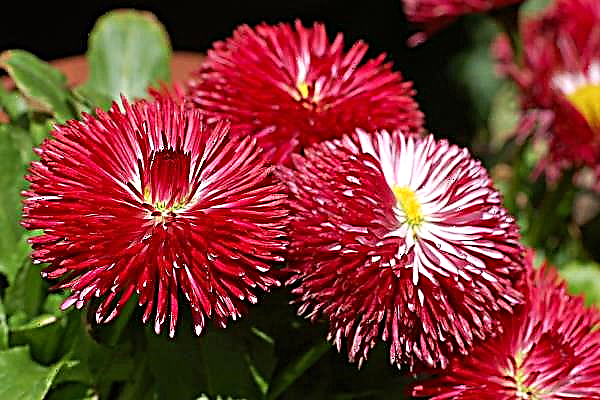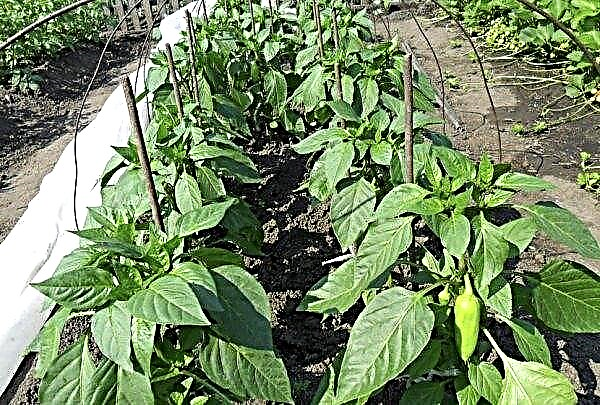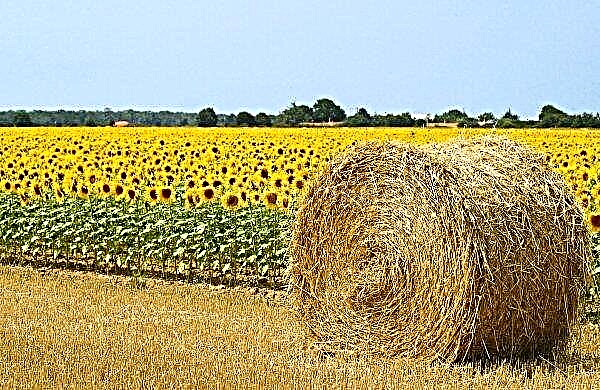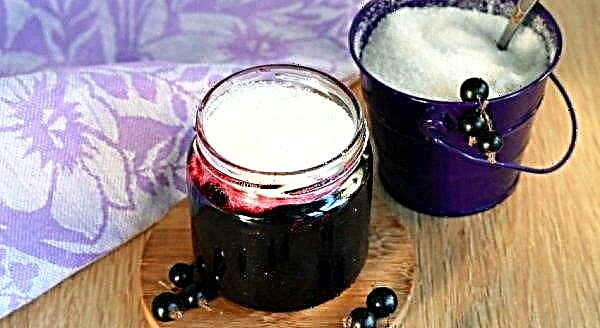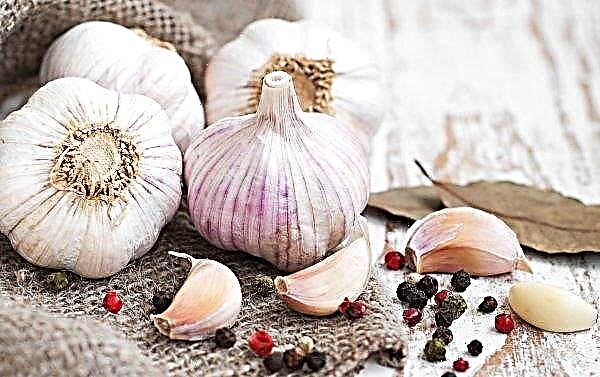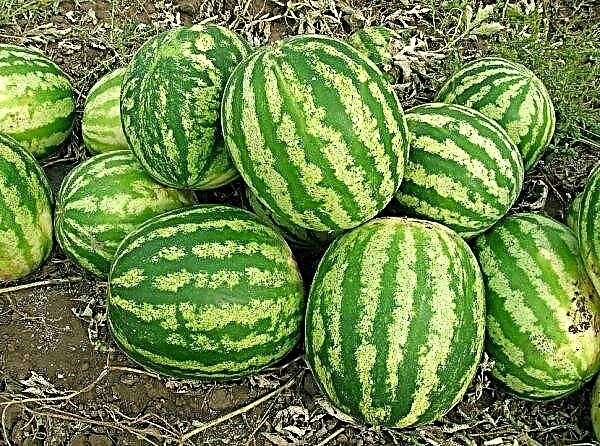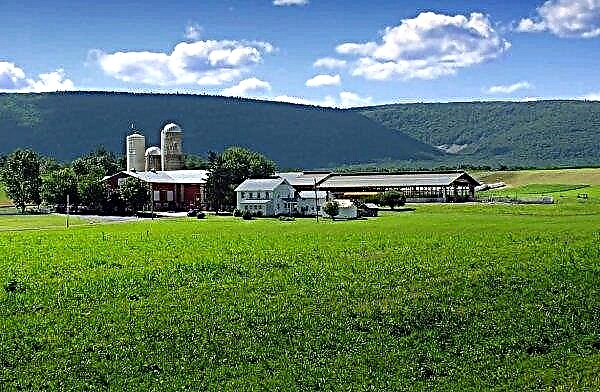Observance of all phases of the biological cycle of development of Savoy cabbage affects the future crop, therefore, it is necessary to clarify what it is and also adhere to the cultivation technology, taking into account the factors that affect this process. To do this, you need to familiarize yourself with the agricultural technology of its cultivation and the nuances of further care.
How it looks and how it differs from the white
The botanical name of the plant is Savoy cabbage, it belongs to the Cruciferous family. Let us consider in more detail how it differs from ordinary cabbage. The plant also refers to biennial plants with cross-pollination. Outwardly, it resembles white cabbage, but in terms of taste superior to it, as it contains a small amount of mustard oils.
Did you know? Scott Robb managed to grow the largest cabbage in 2012. The weight of the vegetable was 62.7 kg.
The leaves of the plant are large, corrugated, without hard veins, depending on the variety, they have a different color from light green to blue. The stump, unlike white cabbage, is much smaller, as it consists of delicate and thin leaves without hard veins.
Weight ranges from 0.5 to 3 kg. This cabbage is less susceptible to disease, tolerates summer droughts and frosts, unlike other species.
Calorie content and chemical composition
The calorie content of 100 g of cabbage in raw form is only 28 kcal, and in boiled - 24 kcal. Vegetable is considered to be a low-calorie product, so it is recommended to use it in diet food.
The energy value of the product per 100 g is:
- proteins - 1.2 g (4.8 kcal);
- fats - 0.1 g (0.9 kcal);
- carbohydrates - 6 g (24 kcal);
- fiber - 2.1 g;
- ash - 0.8 g.
It is quite difficult to overestimate the beneficial properties of savoy cabbage, so we will consider the chemical composition in more detail, for this we use the following table.
| Vitamins | Macronutrients | Trace elements |
| Beta Carotene - 0.6 mg | Potassium - 230 mg | Iron - 0.4 mg |
| Thiamine (B1) - 0.07 mg | Calcium - 35 mg | Manganese - 180 mcg |
| Riboflavin (B2) - 0.03 mg | Magnesium - 28 mg | Copper - 62 mcg |
| B3 or PP - 0.3 mg | Sodium - 28 mg | Selenium - 0.9 mcg |
| Pyridoxine (B6) - 0.19 mg | Phosphorus - 42 mg | Zinc - 0.27 mg |
| Folic Acid (B9) - 80 mcg | ||
| E (tocopherol) - 0.17 mg | ||
| K (phylloquinone) - 68.8 mcg |
 Due to the content of the natural antioxidant glutathione, Savoy cabbage helps to restore and rejuvenate the body, and also slows down the aging of body cells.
Due to the content of the natural antioxidant glutathione, Savoy cabbage helps to restore and rejuvenate the body, and also slows down the aging of body cells.Beneficial features
You should familiarize yourself with what is useful Savoy cabbage.
- Useful qualities of a plant depend on its chemical composition and are as follows:
- Due to the content of ascorbic acid strengthens the immune system.
- It has a beneficial effect on the human nervous system.
- It normalizes blood pressure and has a positive effect on the state of the blood.
- Improves the digestion process, thereby speeding up the elimination of toxins, carcinogens from the body.
- Normalizes blood sugar.
- Due to the content of retinol, it favorably affects the skin.
- Normalizes the level of female and male sex hormones.
- Prevents the occurrence of cancerous tumors, does not change the structure of DNA, and also inhibits the growth of existing ones.
Contraindications and harm
Despite all its benefits, Savoy cabbage can also bring harm. Let us consider in more detail who should not use it.
- This group includes people who:
- Recently underwent surgery on the sternum or abdominal cavity.
- They suffer from peptic ulcers of the stomach or duodenum, as well as acute gastritis and enterocolitis.
- They have endocrine problems (thyroid disease).

How can i use
Savoy cabbage is usually used not only in the process of preparing various dishes, but also in folk medicine. Let us consider in more detail each of these areas.
In cooking
Consider how to eat cabbage. You can eat this vegetable not only in its raw form, but also after heat treatment. Cabbage leaves are perfect for cooking cabbage rolls, various salads, and in boiled form it can act as a side dish and as a first course.
Did you know? A resident of St. Petersburg Efim Grachev managed to grow a cabbage with a diameter of 71 cm. The vegetable was demonstrated in 1873 at an exhibition in Vienna.
Often it is used as a filling for making pies and casseroles. Due to the hard leaves, it cannot be used for starter culture.
In folk medicine
The vegetable is used in traditional medicine and cosmetology.
Consider in more detail the medicinal properties of Savoy cabbage and some of the simplest and most effective recipes for use:
- Double daily use of 150 g of freshly squeezed juice will help get rid of vitamin deficiency.
- For burns, slightly squeezed cabbage leaves should be applied to the wound.
How to grow in the garden
Agricultural technology of Savoy cabbage is similar to its close relative - white-cabbage. Next, we will study in detail the issue of growing in a summer cottage, as well as provide practical recommendations from farmers.
Grade selection
The variety of cabbage depends on the ripening period. Early ripe varieties are distinguished - from 105-120 days, mid-ripening - 120-135 days and late ripe - more than 140 days.
Among the early varieties, the following are distinguished:
- Golden early. The variety was created by Czech breeders, the growing season is 105–110 days. The mass of the fetus is - 7-8 kg. The variety is resistant to cracking, perfectly survives drought and frost. Corrugated leaves with a bluish-green tint.
- Moscow lace. The growing season is 90–95 days. The mass of the fetus is 1–1.2 kg. The vegetable is immune to infections such as bacteriosis and fusariosis. The leaves are medium with a light green color, bubbly with a wide oval shape.
- Anniversary. One of the early ripening varieties, the growing season is up to 102 days. Green leaves with a grayish tint and small bubbles. This variety is prone to cracking.



From mid-season varieties and hybrids, it is recommended to grow such as Melissa F1. Stable crop hybrid with a ripening period of up to 120 days. The plant is slightly susceptible to cracking. The mass of the fetus is 2-3 kg.
Did you know? In Veliky Novgorod, prepared a record amount of sauerkraut. The weight of the product was 2 tons, and the event was recorded in the Guinness Book of Records.
Heads of cabbage are rounded with leaves of a bluish-green hue with pronounced bubbling. The hybrid is immune to Fusarium, tolerates dry summers and cooling. The variety is suitable for long-term storage.
Among late-ripening varieties, the following were distributed:
- Vertu 1340. The growing season is 130–155 days. The weight of a head of cabbage is 1.5–2.5 kg, slightly susceptible to cracking. The leaves are bluish with a green color, wavy, with a pimpled surface. Stump strongly flattened up to 25 cm high.
- Nadia F1. The growing season is 135–140 days. The leaf plate is highly bubbly with wavy edges. Green leaves with a gray coating. The weight of the fetus is up to 1.1 kg. The variety is perfectly stored without losing its commercial characteristics. The vegetable is resistant to cracking and fusarium.


Seedling selection
This vegetable can be grown both in seedling method and using seeds. Seedlings will be problematic to purchase on the market, so you can grow it yourself.
To obtain seedlings, disinfected seeds should be sown in previously prepared soil to a depth of 0.5–1 cm. Depending on the type of cabbage used, seeds must be sown before March 15–20.
Important! So that the plant does not have stress, it should immediately be placed in an individual container. Peat cups are ideal for this, which in the future will enrich the soil with all the necessary nutrients.
It is necessary to plant healthy seedlings, since the patient will not take root well, which in the future will stop her growth. Before planting, special attention should be paid to the root system, since it can be affected by a fungus that forms growths on it.
Early varieties are recommended to be planted in late April or early May, while mid-season and late-ripening are recommended in early May.
It is necessary to adhere to such recommendations for planting seedlings in the ground.
- Young sprouts of cabbage should be planted in the ground when the daytime temperature is set at + 15 ° C.
- The height of young seedlings should be 18–20 cm and consist of 5–6 leaves.
- The color of the seedlings should be bright green.

Landing
The ripening process affects the process of growing vegetables. It is advisable to place seedlings in a sunny area with light soil, which can be fed with lime in the fall to reduce acidity. During planting, special attention should be paid to the acidity of the soil.
Important! The optimum level of soil acidity is 6.5–7 pH. In spring, the soil can be fed with organic fertilizers, for this it is necessary for 1 m² add 3–4 kg
Vegetables grow well after crops such as beets, tomatoes, onions, potatoes, beans and perennial herbs. The future harvest will be bad if you plant cabbage after turnips, radishes, radishes and watercress. The vegetable should be returned to the former planting site only after 4–5 years.
Cabbage forms a small rosette, so it is grown between rows of rows 60 cm wide at a distance of 30 cm. For late varieties, the planting pattern is 50 × 50 cm, and for early ripening, 50 × 35–40 cm.
In the first two days, young seedlings must be shaded, and covered with agricultural fiber at night. After a week, it is necessary to remove the seedlings that have not taken root, and to plant fresh ones in its place.
Care
This culture needs special care. It must be loosened, fed with fertilizers, spud, and also prevent diseases. Savoy cabbage loves moisture, but does not tolerate waterlogging. To avoid cracking on the head, water must be applied directly under the root. Irrigation must be carried out in the morning or in the evening in order to avoid burns of leaves.
To avoid cracking on the head, water must be applied directly under the root. Irrigation must be carried out in the morning or in the evening in order to avoid burns of leaves.
Important! The first loosening of the soil is recommended immediately after planting to a depth of 5–7 cm, especially if the plant is planted in heavy soil. Subsequent loosening should be carried out to a depth of 12–15 cm
Around the plant itself, loosening is necessary not deep, so as not to damage the root system. For the entire growing season, it is necessary to carry out two fertilizing fertilizers. The first is carried out after the tops of the plant grow.
To do this, prepare a choice:
- a solution of cow humus in a proportion of 1/10;
- mineral mixture. For this procedure, it is recommended to dissolve the following ingredients in 10 l of pure water: 15 g of urea (urea), 40 g of superphosphate and 15 g of potassium-based fertilizers (potassium nitrate or potassium chloride).
 The second recharge is carried out during the formation of the head of cabbage with a solution based on potassium and phosphate fertilizers, for this it is necessary to add nitroammophoska to the soil at the rate of 30 g per 1 m². To make the plant strong, it can also be fed with humate.
The second recharge is carried out during the formation of the head of cabbage with a solution based on potassium and phosphate fertilizers, for this it is necessary to add nitroammophoska to the soil at the rate of 30 g per 1 m². To make the plant strong, it can also be fed with humate.Each agronomist wants to get an excellent harvest of Savoy cabbage. Having studied the basic rules of breeding, as well as growing conditions, you can achieve the desired result.

